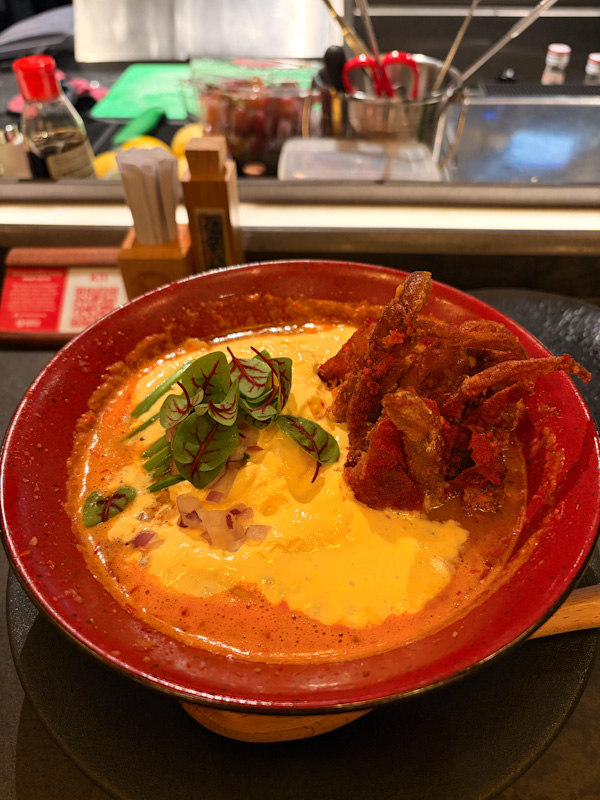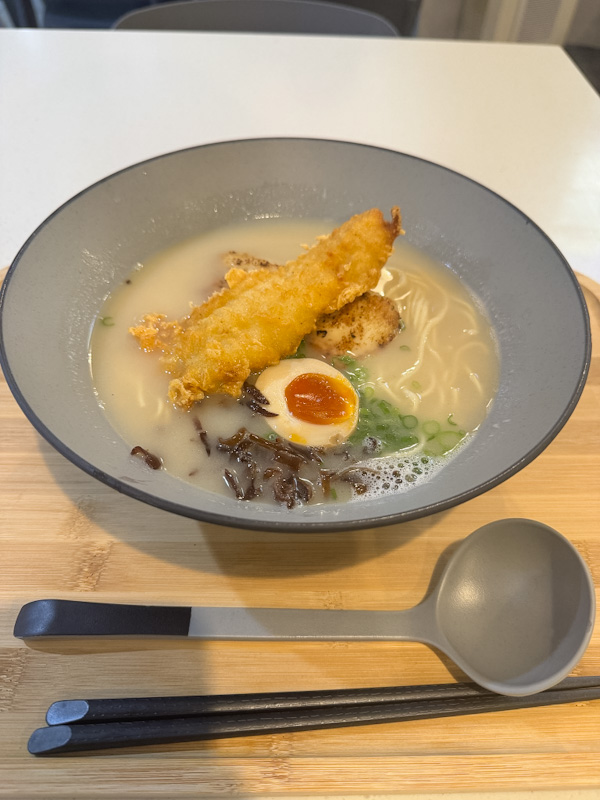WHAT WE ATE
- Tonkotsu Shio Ramen, 95/100, 9 Nov 2025
- Kurobuta Toroniku Tonkutsu Ramen, 75/100, 9 Nov 2025
- Tonkotsu & Tomato Cheese Ramen, 90/100, 5 Nov 2025
- Kurobuta Toroniku Shoyu Ramen, 100/100, 3 Oct 2024
- Tonkotsu & Miso Ramen, 90/100, 3 Oct 2024
- Kurobuta Toroniku Awase Ramen, 90/100, 29 Nov 2024
- Mazesoba, 95/100, 29 Nov 2024
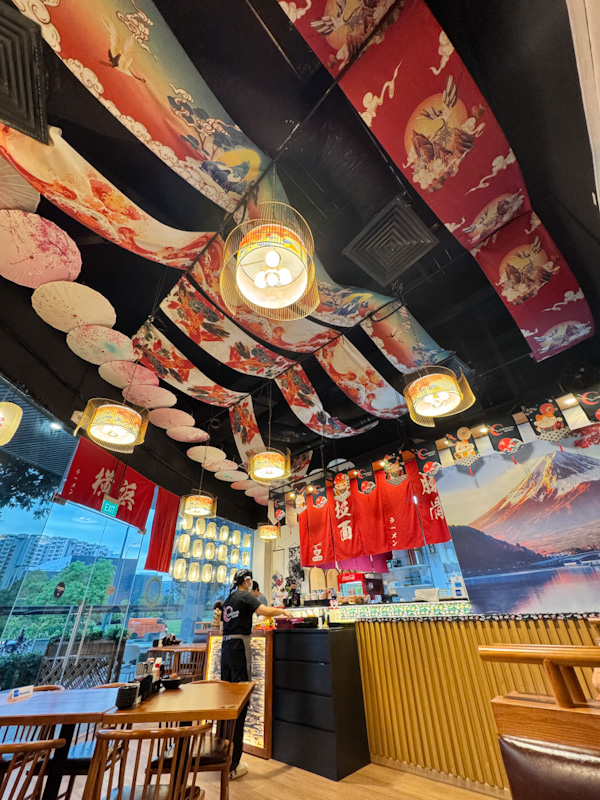
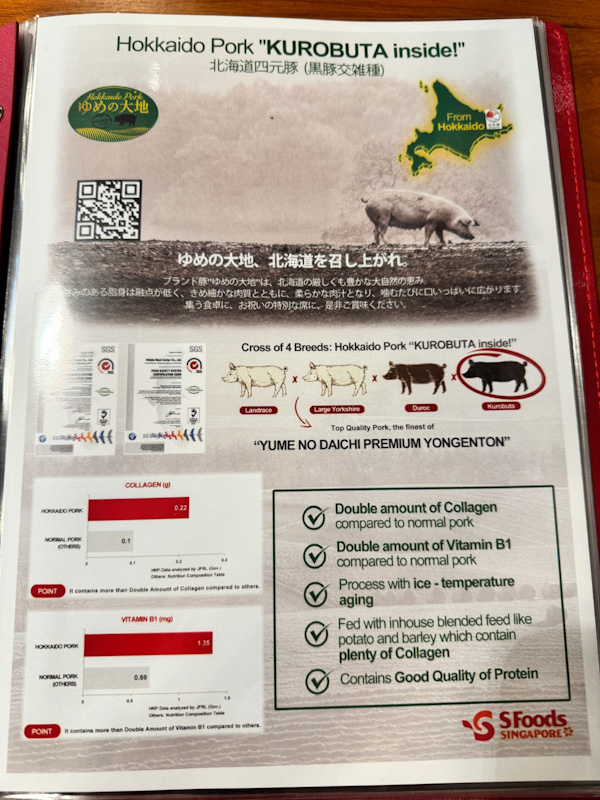
After returning from my ramen pilgrimage in Japan, I was excited to stumble upon a “Yokohama Ramen” shop right across BreadTalk HQ. The simple decor, free-flow eggs, and table loaded with seasonings definitely added to the charm.
Ie-kei (家系) ramen, which hails from Yokohama, is known for its thick noodles in a rich, soy-flavored pork broth, often referred to as tonkotsu-shoyu. What makes it unique is the concept of ajihen (味変), where you can continuously adjust the flavors by adding different seasonings throughout the meal. While the ramen here wasn’t exactly what you’d call traditional Ie-kei, it was close enough to remind me of what I loved about Yokohama’s ramen scene!
Note: On a revisit nearly two months later, we tried two other dishes and were pleased to find the standards remained consistently high.
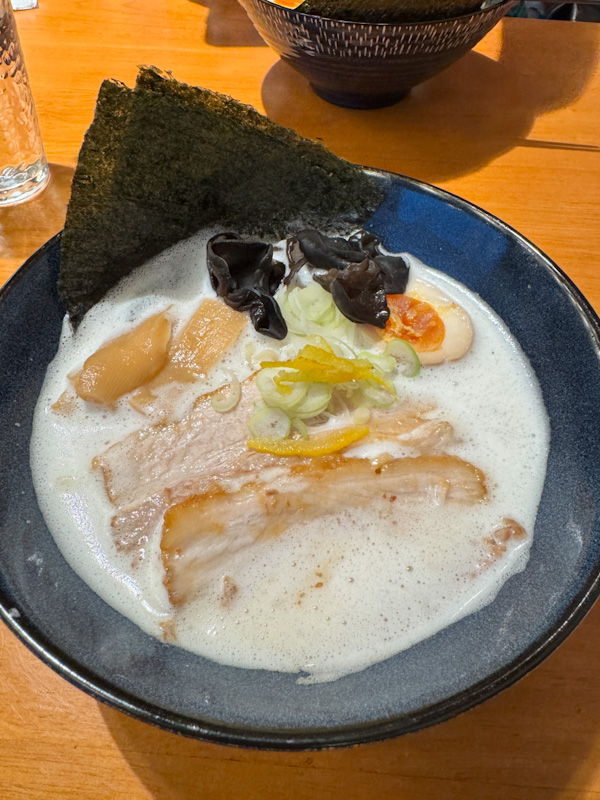
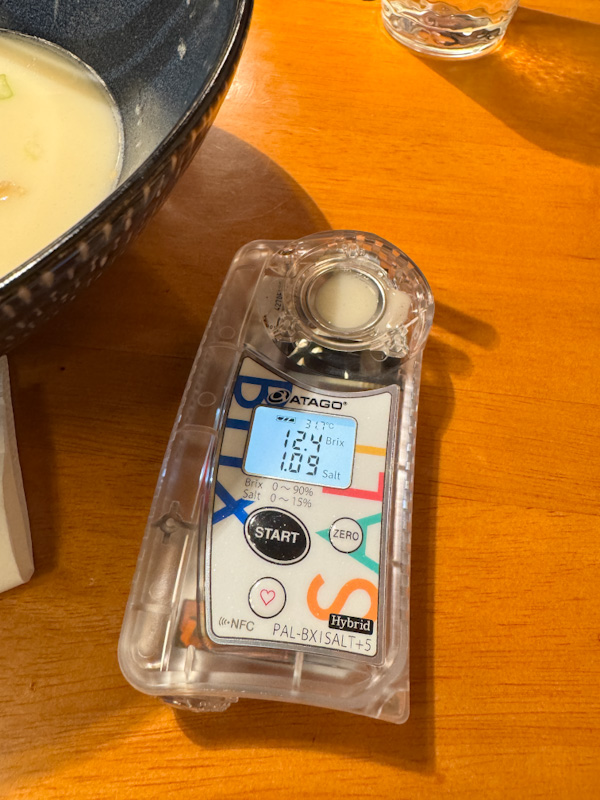

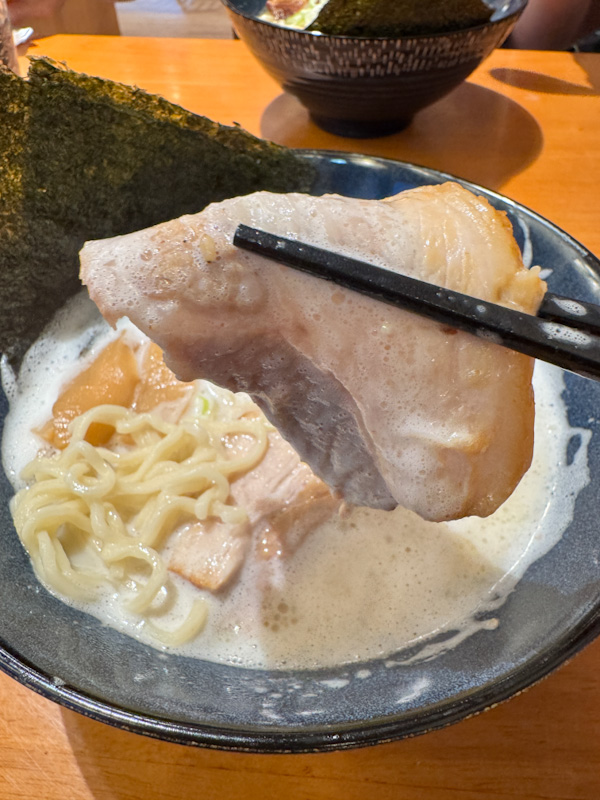


Tonkotsu Shio Ramen: 95/100
Noodle: 35/35
Medium-thick and lightly curly, these noodles are built for structure. They hold their spring well and bite back with that ideal firmness ramen lovers chase. Each strand carries a subtle earthy wheat flavour, adding depth without overpowering the soup. It’s the kind of noodle that plays its role perfectly—firm, snappy, and faithful from first bite to last.
Soup: 30/35
A visually striking broth with a frothy white surface that looks almost ethereal. The head of the soup is creamy and milky, coating the tongue with a velvety smoothness. Beneath that softness lies a gentle savouriness, rounded out by a faint sweetness that lingers toward the end. It isn’t the most complex tonkotsu broth, but it wins you over with comfort and warmth rather than bravado. Think of it as the quiet confidence of a well-made home broth—clean, balanced, and soothing.
Meat: 20/20
A well-executed pork belly slice that hits all the right notes. The cut is generous, tender, and pleasantly chewy at the edges, with just enough fat to melt luxuriously across the palate. The flavour leans savoury, with a subtle sweetness that emerges as the fat renders. Every bite reinforces why chashu remains the soul of a tonkotsu bowl when done right.
Other Toppings: 10/10
The toppings lift the bowl in quiet but meaningful ways. Together, they create balance and rhythm—each bite alternates between creamy, bright, and textured.
- The black fungus adds crunch and a faint earthiness
- The slivers of yuzu skin bring light, zesty bursts that refresh the palate.
- Negi contributes that crisp, mildly piquant lift
- The bamboo shoots are tender with a touch of pungent savouriness.
- The seaweed soaks up the goodness of the broth and adds some umami kick.
Summary
A near-flawless rendition of tonkotsu shio ramen that leans toward comfort rather than intensity. Every component is purposeful, from the snappy noodles to the milky broth and delicate garnishes. It’s not trying to reinvent the wheel, but it reminds you how satisfying simplicity can be when done with precision.

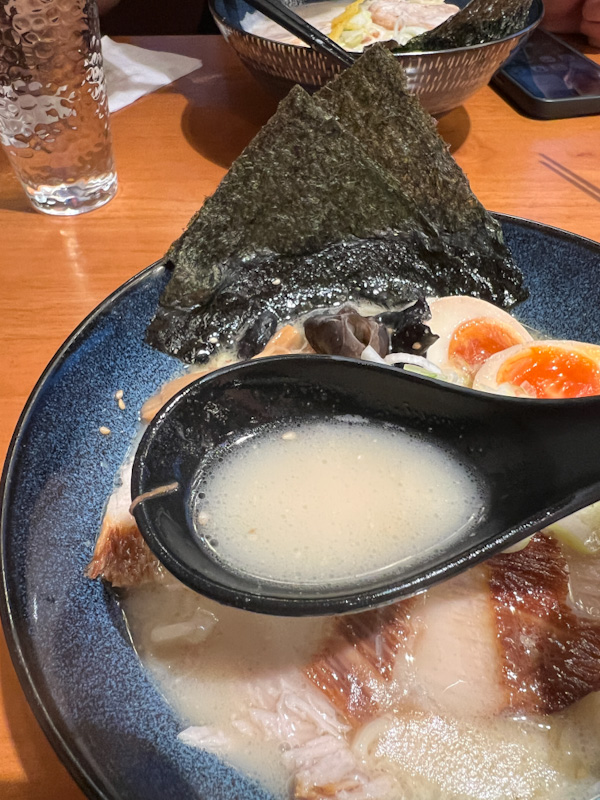
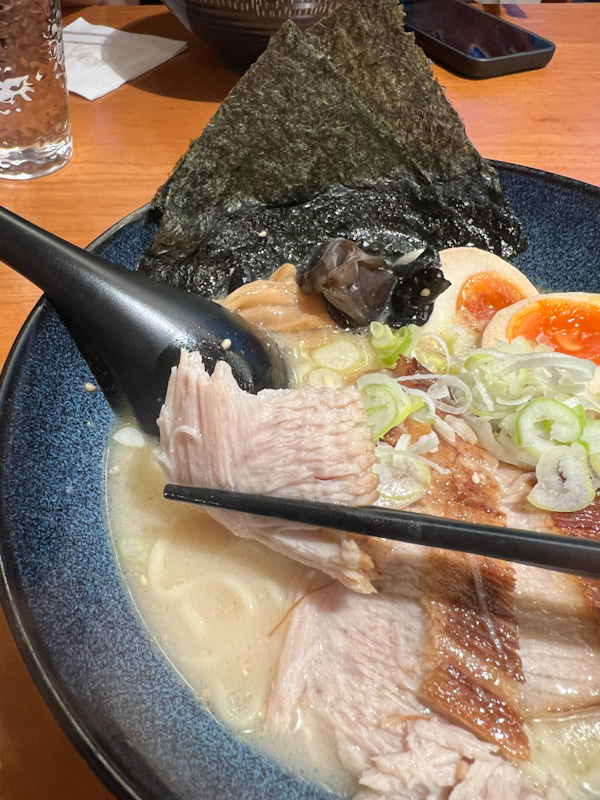


Kurobuta Toroniku Tonkotsu Ramen: 75/100
Noodle: 35/35
The noodles are consistent with the shop’s other soup-based offerings—medium-thick, lightly curly, and resilient in structure. They hold their spring remarkably well, offering a firm, snappy bite that feels deliberate rather than accidental. Each strand releases a faint earthy wheat flavour, complementing rather than clashing with the broth. It’s a textbook noodle: balanced, assertive, and faithful in texture throughout the bowl.
Soup: 15/35
This is where the bowl loses its stride. The head of the broth opens with a savoury, mildly meaty note, followed by a body that is saline with a faint sweetness beneath. A whisper of garlic lingers at the end, but it never quite crescendos into the deep, creamy richness one expects from a tonkotsu. The brix reading suggests concentration, yet the palate says otherwise—density without depth. It feels like a base broth, designed to be adaptable rather than distinctive. There’s porkiness, yes, but not the kind that envelops or lingers. In short, the structure is there, but the soul feels dialed down.
Meat: 20/20
The toroniku is the undisputed star. Made from Hokkaido-imported Kurobuta pork cheek, it’s everything premium pork should be: soft, tender, and meltingly juicy. The fat liquefies on the tongue, coating it with a creamy, almost custard-like richness. It starts salty, then rounds out into a layered savoury sweetness that reveals both quality and precision in preparation. Few cuts achieve this kind of balance between indulgence and restraint—it’s simply outstanding.
Other Toppings: 5/10
Standard accompaniments that perform adequately but don’t elevate the bowl. Black fungus adds crunch; negi provides a clean, mildly piquant freshness; and bamboo shoots contribute that subtle pungent-savoury note. The seaweed absorbs the broth and offers an umami boost, but none of these toppings bring surprise or refinement. They’re functional rather than thoughtful, serving more as a supporting cast than a chorus.
Summary
A ramen of contrasting fortunes. The toroniku alone could justify a visit—it’s exceptional. But the broth feels muted, almost as if it’s holding back. There’s a sense that this tonkotsu is more foundational than final, a base that hints at what could be rather than what is. Still, it’s a bowl worth trying for the meat alone, though the soup could use a little more conviction.
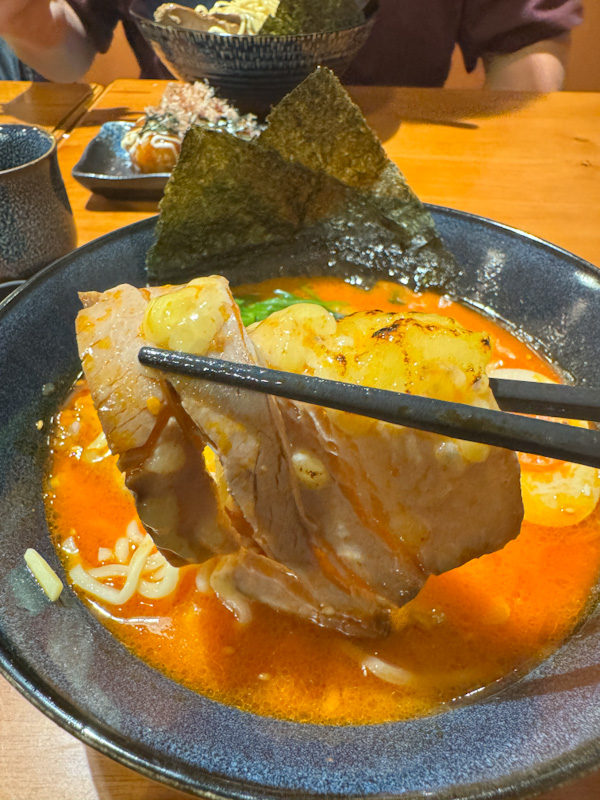
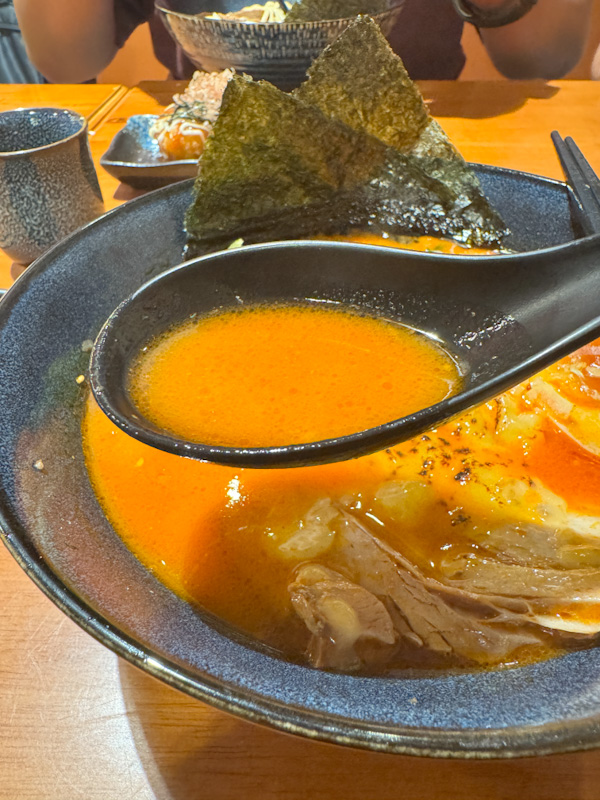


Tonkotsu & Tomato Cheese Ramen: 90/100
Noodle: 35/35
Medium-thick curly noodles cooked to a perfect al dente. Each strand holds a firm spring, carrying just the right amount of resistance before yielding. The surface clings lightly to the teeth, giving that tactile reminder of handmade care. The taste leans earthy and wholesome, showcasing a clean wheat aroma without the unpleasant alkaline bite that sometimes appears in yellower noodles. It’s one of those noodle bases that make you pause between bites — simple yet deeply satisfying.
Soup: 30/35
The head greets you with a rich, creamy sweetness, unmistakably tomato-driven. It’s bright and full-bodied, a fusion between a comforting bisque and a ramen broth. As it settles, the body turns salty, savoury, and densely umami, evoking the kind of slow-cooked balance you find in Italian-style reductions. The ending lingers with a sourish tang — that faint fruity acidity characteristic of ripe tomato countered by a returning wave of mellow sweetness. What’s impressive is the progression: the first sip spotlights the sourness, sharp and refreshing. As your palate acclimates, the umami and richness emerge more prominently, turning the tang into a supporting note rather than a lead. If anything, a deeper richness, perhaps another layer of cheese or stock could push this from excellent to sublime.
Meat: 15/20
The chashu here features thin but generously sized slices of pork belly, alternating between lean and fatty layers. The fat melts easily, releasing a gentle sweetness, while the lean portions demand some work — the kind that rewards you with a steady build of flavour. The cut is closer to the classic braised style rather than the melt-in-your-mouth kind, giving the bowl a rustic heartiness. The marinade imparts a sweet-savory depth, though it doesn’t quite reach the luxurious finesse of their pork cheek version. Still, it provides balance and a grounding element to an otherwise tomato-forward bowl.
Toppings: 10/10
A bowl that truly benefits from its supporting cast.
- The seaweed is a standout — it absorbs the sour notes from the soup and transforms them into a concentrated umami burst.
- The spinach, while taking a smaller supportive role adds a mild vegetal and bitter taste. Works well as a palette cleanser.
- The marinated egg is textbook-perfect. Savoury-sweet with a caramel undertone, custard-like in texture, and visually stunning against the red broth.
- The melted cheese ties everything together — creamy, milky, indulgent. Part of me wonders what might happen if the chef layered in two or three types of cheese, something saltier or sharper. It could tip the bowl into uncharted, decadent territory. But as it stands, it’s already a masterclass in balance and intent.
Summary
This Tomato and Cheese Ramen is a confident bowl that bridges Japanese technique with Italian soul. It’s not trying to mimic a Western dish, but to reinterpret tomato’s natural brightness through a ramen lens. The result is playful yet measured, familiar yet intriguing — a bowl that rewards you for slowing down and tasting how each layer evolves.
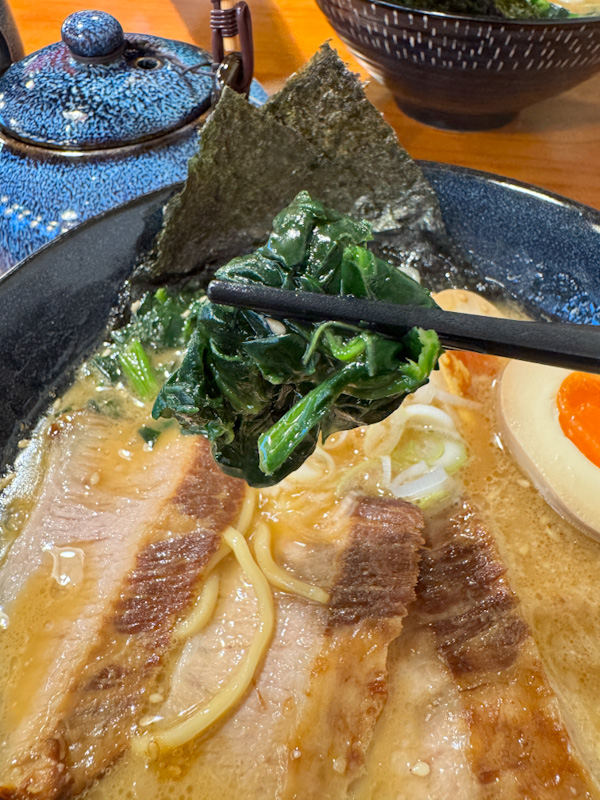

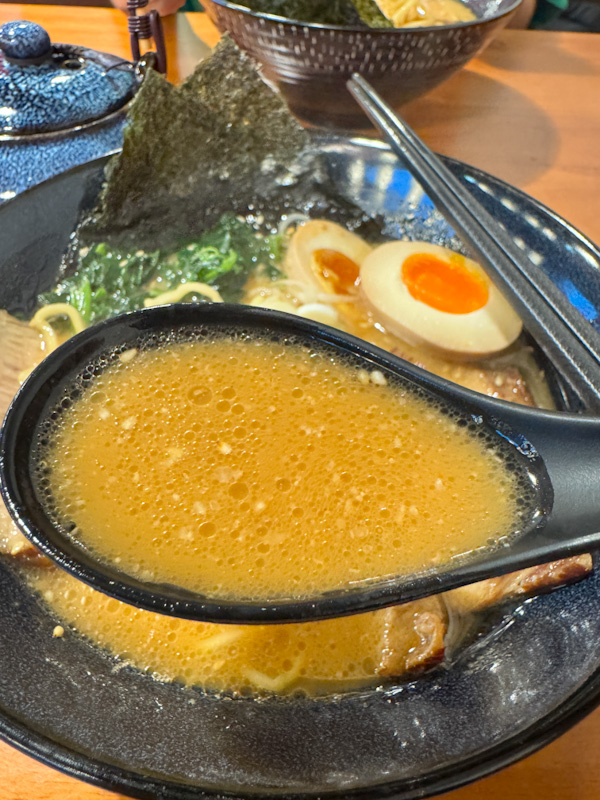
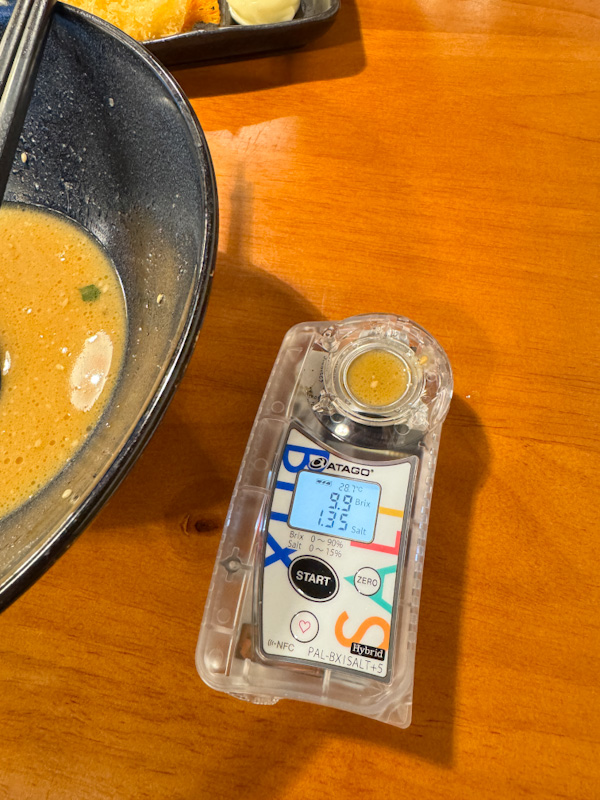



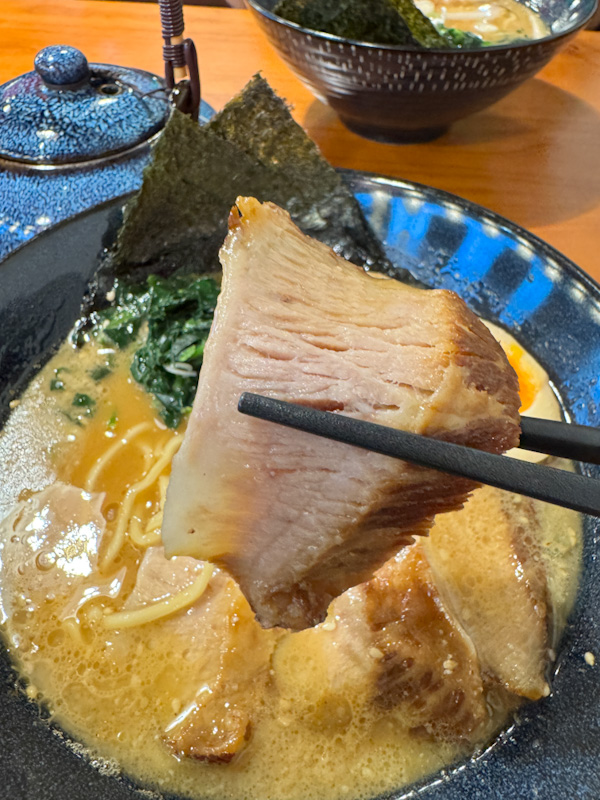
Kurobuta Toroniku Shoyu Ramen: 100/100
Noodle: 35/35
The noodles are medium thick and curly, served al dente with a slightly chewy texture that delivers a snappy and satisfying bite. The subtle wheat flavor is pleasant, and they soak up the soup’s savory richness beautifully. These noodles closely resemble those from classic Yokohama ramen, like at Yoshimuraya, but are slightly thinner in this Singaporean take. It’s a smart choice, as the thinner noodles balance well with the soup’s slightly milder profile.
Soup: 35/35
The soup is rich, smooth, and layered with flavor. It starts with a salty kick, followed by earthy sesame notes, deep sweetness, and umami. The lingering shoyu aroma adds a perfect finishing touch, making each sip more enjoyable than the last. Having recently tried several famous ramen shops in Yokohama, I found this soup remarkably authentic. The flavor profile is spot-on for a place claiming to serve Yokohama-style ramen—truly satisfying and addictive.
Meat: 20/20
The Kurobuta pork used here is supposedly a premium import from Hokkaido, and it certainly lives up to the claim. I opted for the Toroniku (pork cheek) version, which came with four slices of perfection. The pork cheek is soft, tender, juicy, and creamy, with fats that melt in your mouth, leaving a luxurious sticky texture. Initially salty, the flavor transitions into a robust savory sweetness that showcases the quality of the meat. This pork ranks among the best I’ve had.
Topping: 10/10
The toppings stick to the classic Yokohama style: salty, umami-packed seaweed, punchy negi, and spinach. While not extraordinary, they enhance the meal in a traditional way. The array of seasonings on the table allows for “ajihen” (味変)—the practice of changing the flavor mid-meal—which is a hallmark of Yokohama ramen. Garlic lovers should definitely try the fried garlic chips to elevate the experience even further.
Summary
This is Yokohama-style ramen at its purest form — robust, soulful, and deeply satisfying. Every sip carries that nostalgic shoyu richness layered over a well-balanced tonkotsu base, evoking the authentic character of Ie-kei ramen. The noodles deliver the ideal chew and capture the broth beautifully, while the Kurobuta pork cheek elevates the bowl to luxury status with its silky, melt-in-mouth texture. Classic toppings and the freedom of ajihen make it interactive yet disciplined, a bowl that honours its Yokohama roots while delivering refinement that’s rare outside Japan.


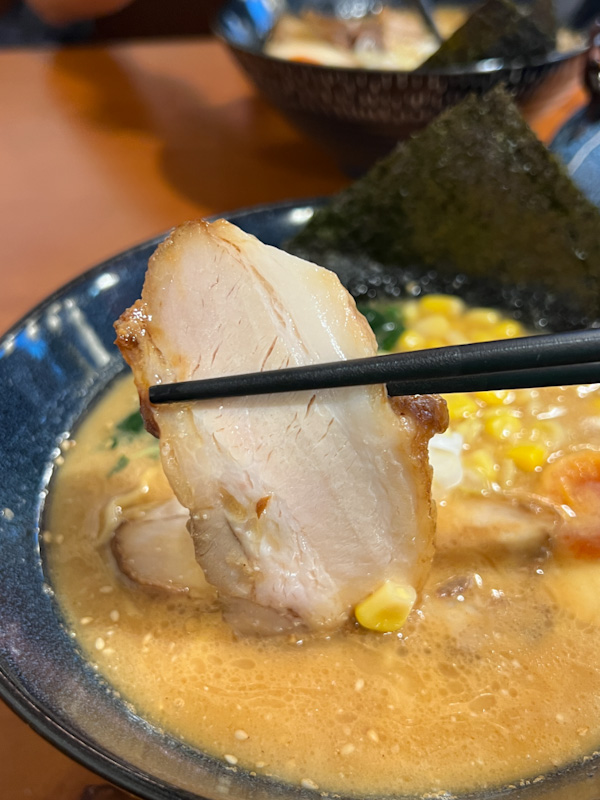
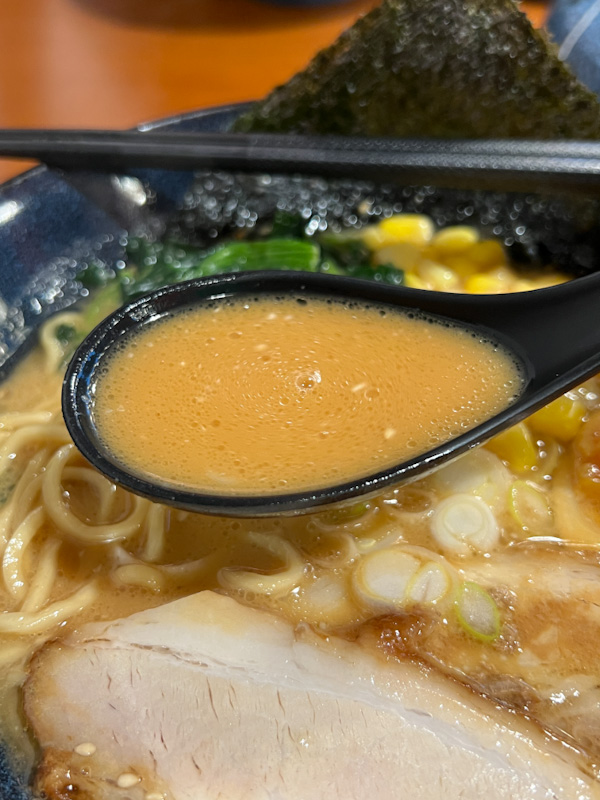

Tonkotsu & Miso Ramen: 90/100
Noodle: 35/35
The same medium-thick, curly noodles are used here, delivering that familiar chewy, snappy bite. The subtle earthy wheat taste of the noodles complements the soup perfectly. Cooked al dente, the texture is spot-on, making each mouthful satisfying and enjoyable.
Soup: 25/35
The soup is a rich fusion of miso and tonkotsu. It starts with tangy, slightly astringent notes of miso, followed by the earthy, umami sweetness of the tonkotsu-miso blend. Though the soup is thick and smooth, the overall flavor profile feels a bit flat, lacking the depth and complexity that a more aged miso might bring. It’s rich but could use more layers of flavor to elevate it further.
Meat: 20/20
We opted for the standard chashu with this dish, and while it may not be as creamy or tender as pork cheeks, the chashu still shines. The pork belly slices are generous and large, tender with melt-in-your-mouth fatty parts. The marination is tangy and savory without being overly salty, allowing the natural taste of the pork to stand out. While the pork cheek upgrade is worth considering, the regular chashu is excellent in its own right.
Topping: 10/10
In addition to the classic toppings from the Tonkotsu Shoyu version, this ramen includes sweet corn, which adds a nice touch of sweetness. However, the soup’s flavor could be deeper to create more contrast with the corn. Still, the toppings are thoughtfully chosen and complement the dish well.
Summary
A comforting fusion of two powerhouse bases — tonkotsu and miso — that leans hearty and familiar. The noodles perform flawlessly, while the broth delivers richness and warmth with a mild miso sharpness. However, it stops short of full depth, lacking the aged miso nuance that could bring more dimension. The pork belly chashu is generous and tender, grounding the bowl with fat and umami. A dependable bowl that satisfies through sheer comfort, even if it doesn’t quite achieve the layered sophistication of its Shoyu sibling.
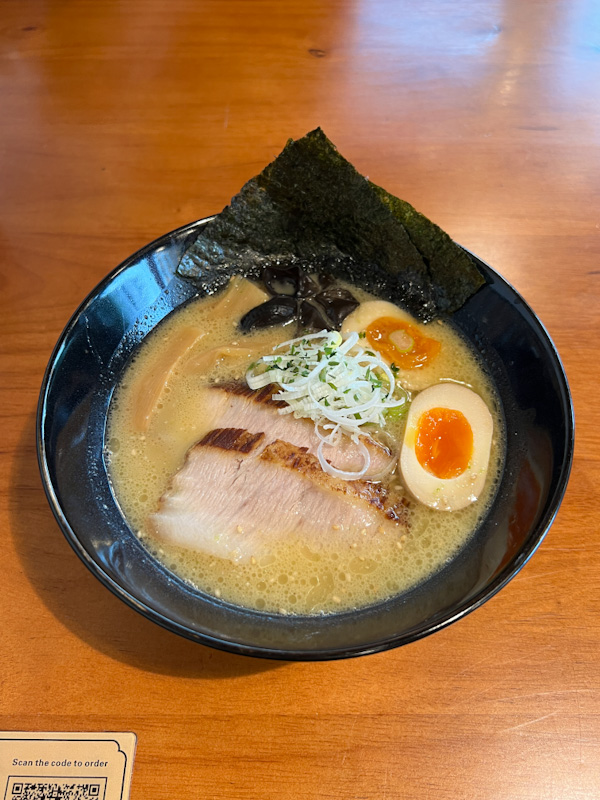
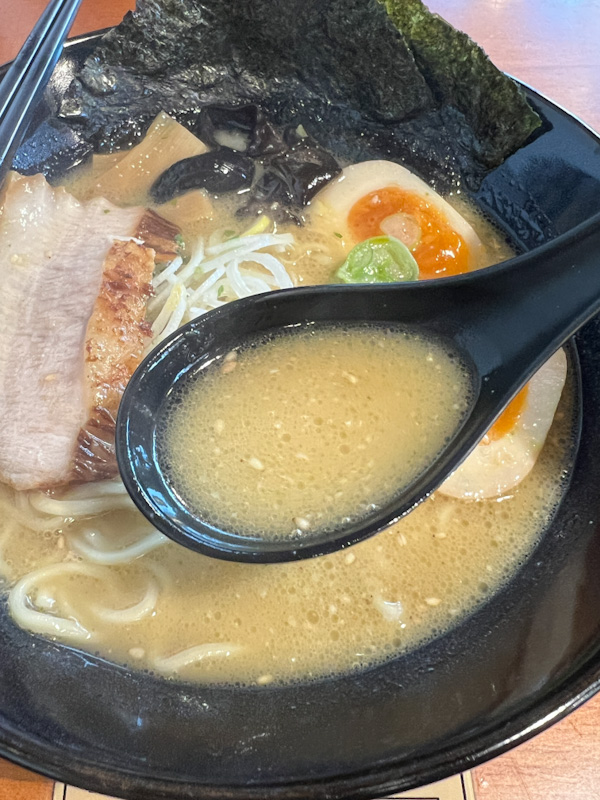
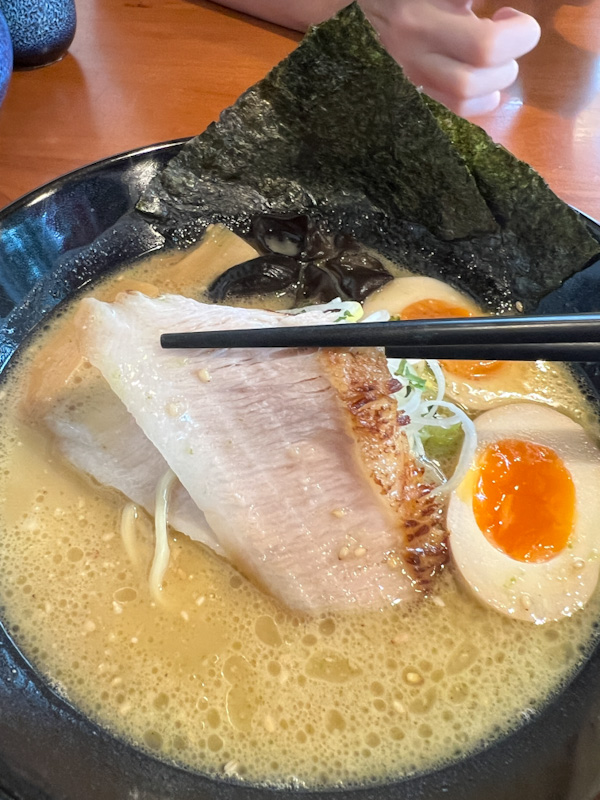

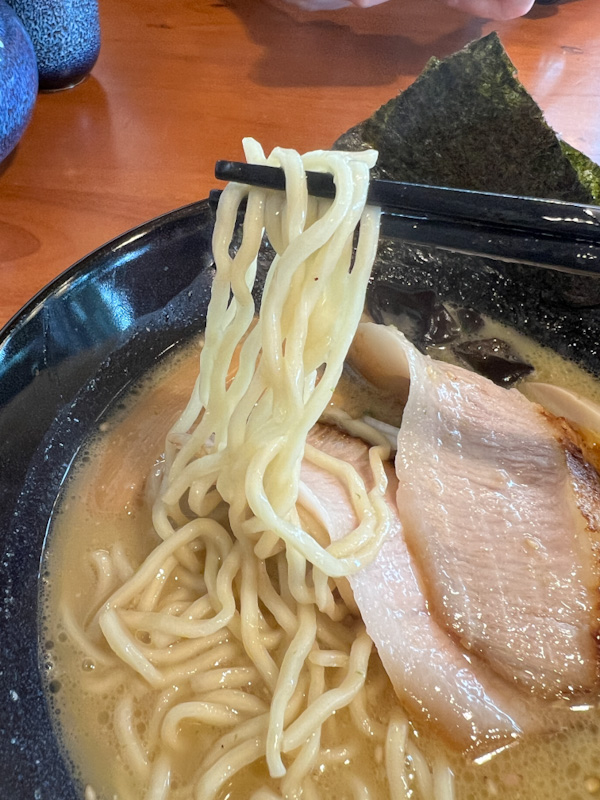
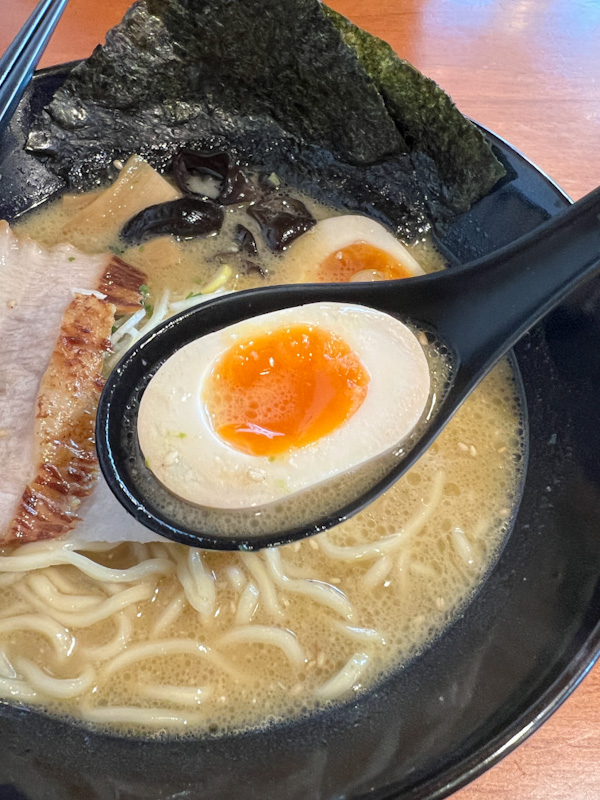
Kurobuta Toroniku Awase Ramen: 90/100
Noodle: 35/35
The same noodles that’s used in the other soup variants are used here. These medium-thick, curly noodles are served al dente, delivering a firm, chewy texture with a satisfying snap. Their subtle wheat flavor complements the richness of the broth, absorbing its savory depth beautifully.
Soup: 25/35
Awase, meaning “mixed,” often signifies a blend of bases like stock broth, dashi, bonito, and kelp. Here, the Awase soup appears to combine Tonkotsu, miso, sesame, and subtle dashi elements. It’s rich, cloudy, and sediment-filled, boasting a 10 brix measurement that highlights its depth. The flavor unfolds with a porky richness, mild sweetness, and lingering tangy miso notes underpinned by a sesame aroma. While the broth is complex, with hints of seafood and a slight grittiness adding intrigue, the seafood elements could be more pronounced to achieve a fuller depth of flavor.
Meat: 20/20
The same delicious pork cheeks are used here. The Kurobuta Toroniku (pork cheek) is the star of the bowl, and it delivers perfection. Imported from Hokkaido, the pork cheek is soft, tender, and creamy, with a luxurious fattiness that melts in your mouth. Its initial saltiness transitions into a deeply savory sweetness, showcasing the quality of the meat. This pork ranks among the best, elevating the entire dish.
Topping: 10/10
A classic array of Tonkotsu-style toppings—negi, black fungus, bamboo shoots, and marinated tamago—provides the perfect accompaniment. The option for ajihen (味変), or flavor transformation mid-meal, with the table’s array of seasonings is a delightful touch. Fried garlic chips are a must-try for garlic lovers, further enhancing the experience and adding a bold punch to an already outstanding bowl.
Summary
The Awase ramen showcases complexity through its blended stock, weaving tonkotsu, miso, sesame, and dashi into a cloudy, sediment-rich broth that speaks of time and craft. The result is deeply savoury with a subtle tang and nutty undertone, though the seafood essence could sing louder. Once again, the Kurobuta pork cheek steals the show, its buttery richness punctuating the broth’s umami. Every topping is purposefully chosen, and the freedom to tweak flavours mid-meal through ajihen gives this bowl a personal, evolving character.
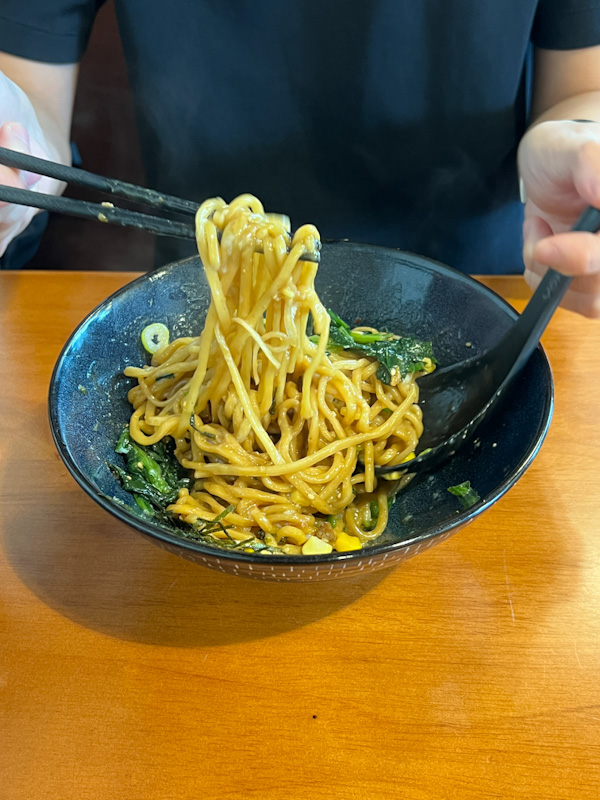
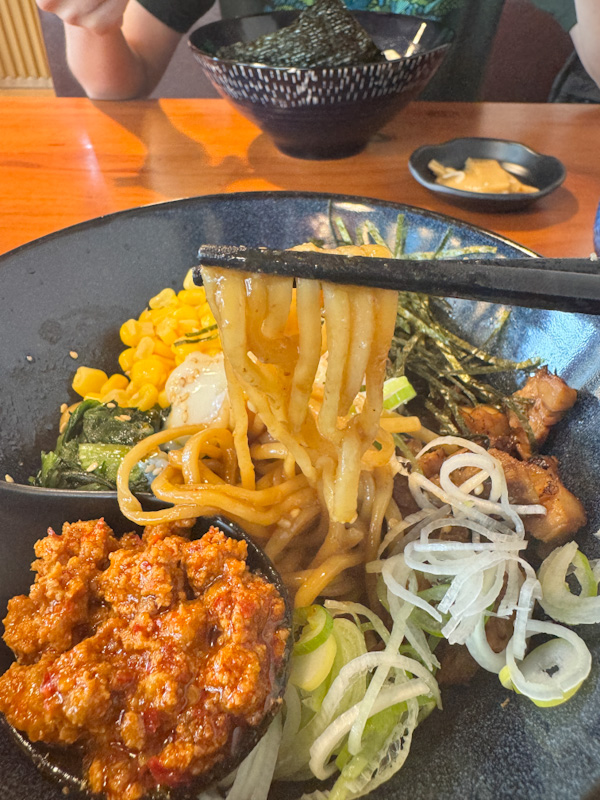
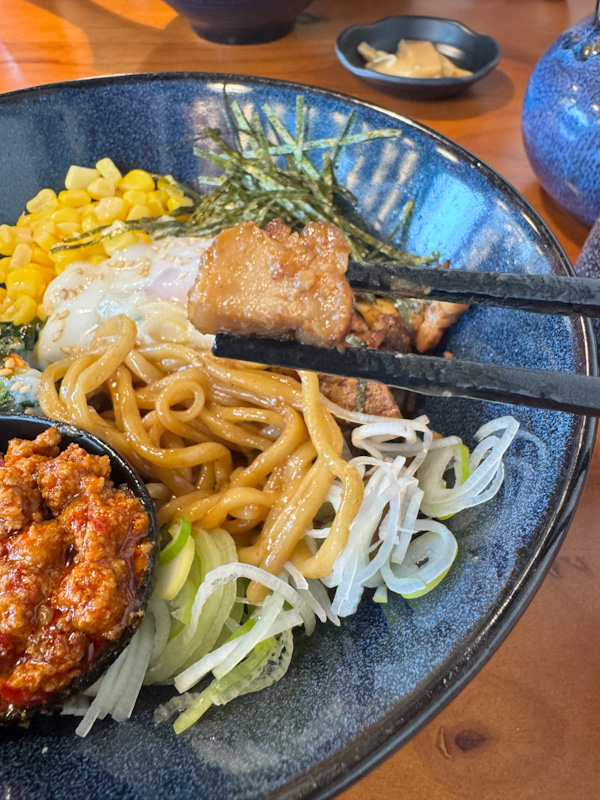

Mazesoba: 95/100
Noodle: 35/35
The thick, slightly oblong noodles are a standout feature. Their firm, chewy, and springy texture delivers a satisfying bite, and they’re served al dente. The subtle earthy wheat flavor complements the dish without any unpleasant kansui bitterness. Remarkably, the noodles maintained their integrity even as they cooled, ensuring a consistently enjoyable experience throughout the meal.
Sauce: 35/35
The sauce, a critical element in mazesoba, is perfectly layered and dynamic. It’s composed of three harmonious parts: the savory-sweet base sauce, the creamy richness of the onsen egg when mixed in, and the chili oil mixture infused with marinated spicy pork. It begins with a sweet note, transitions into deep savoriness, and ends with a lingering, subtle spice featuring aromatic hints of Sichuan pepper, cinnamon, and star anise. This complexity makes for an addictive and well-balanced dish.
Meat: 20/20
The meat is exceptional. Generous portions of marinated minced pork pair perfectly with grilled pork belly cubes, which are tender yet firm, with juicy, melt-in-your-mouth fatty parts. The smoky, savory-sweet profile of the meat enhances the overall strong and flavorful composition of the dish, making it a highlight of the meal.
Topping: 5/10
While the toppings—negi, sweet corn, seaweed, and spinach—offer some variety, they don’t elevate the dish as much as other components. The spinach, in particular, feels overshadowed by the bold flavors of the sauce and meat. The toppings complement the noodles adequately but lack the standout qualities seen in other elements of the dish.
Note: One drawback is the absence of a side soup or rice, which are traditional accompaniments to mazesoba. These would have provided a way to wrap up the meal and fully enjoy the residual sauce, which felt like a missed opportunity.
Summary
This dry ramen is a study in harmony and texture. The thick, springy noodles form the backbone of a sauce that evolves with every mix — first sweet, then savoury, then spicy with a fragrant hum of Sichuan pepper and star anise. The meat component is indulgent, with smoky cubes of grilled pork belly and marinated mince creating bursts of depth in every bite. Despite understated toppings, the base sauce’s complexity carries the dish with confidence. A masterfully composed mazesoba that’s bold, balanced, and endlessly craveable.
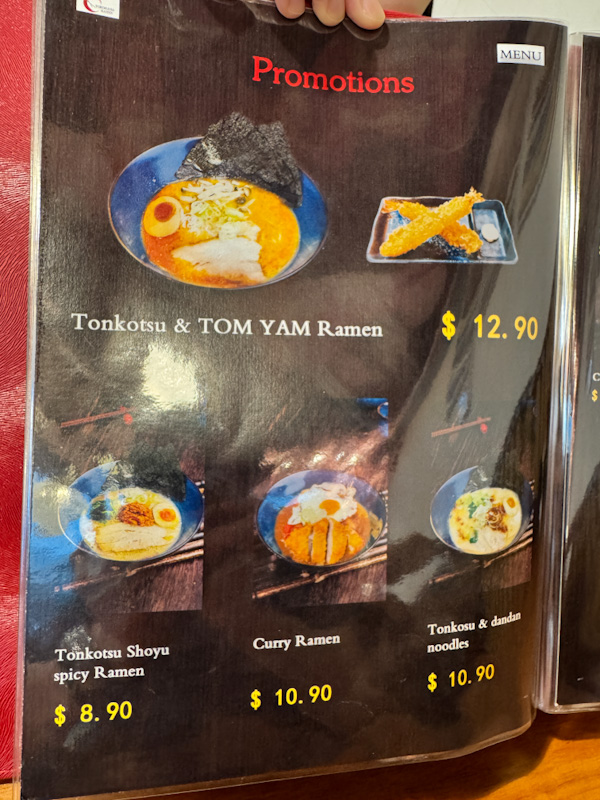


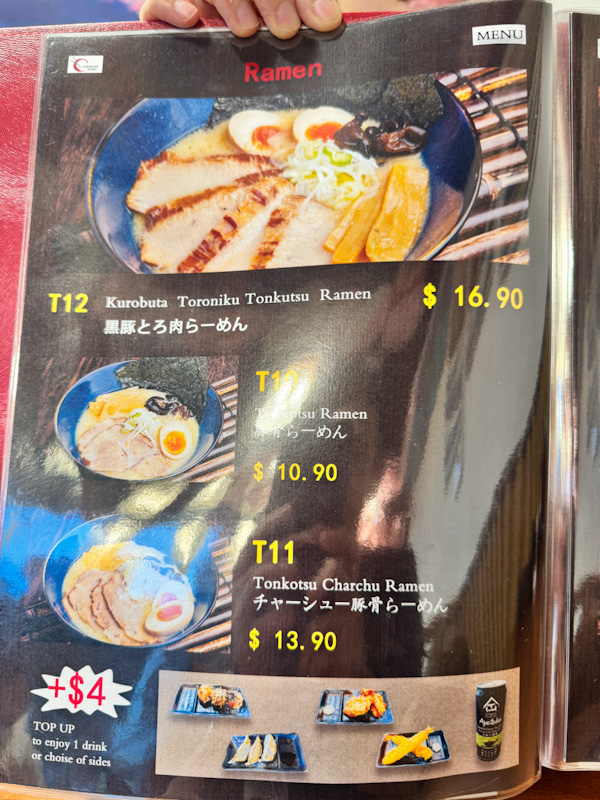
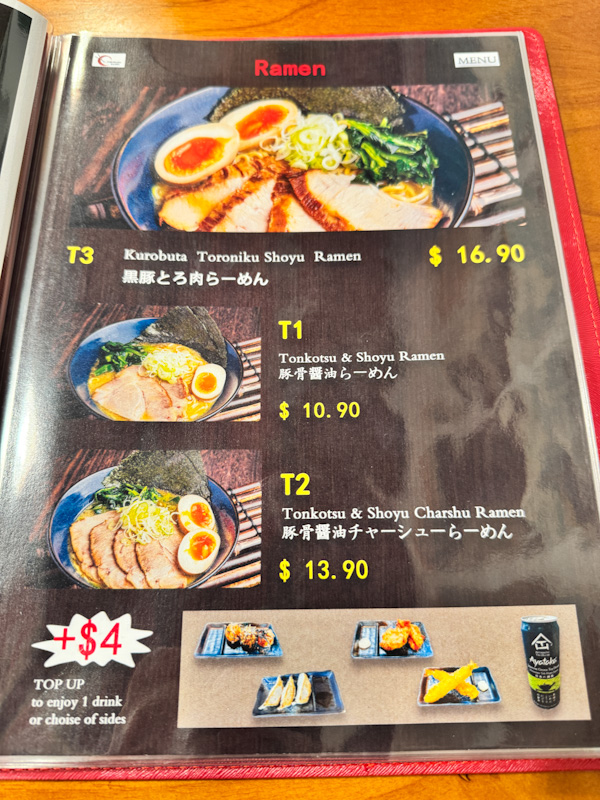

DISCLAIMER
One man’s meat is another man’s poison.
Find out more about our palettes and how we evaluate our ramen here. 😉

